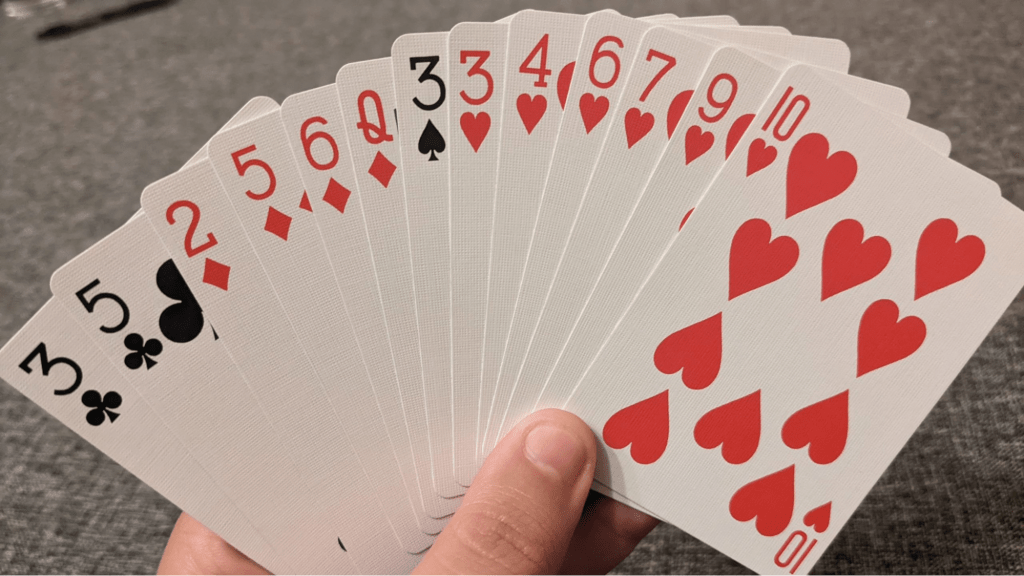Hearts and Spades Mastering Trick-Taking Games
With the help of this thorough tutorial, you can become an expert in trick-taking games and improve your performance in well-known card games like Hearts and Spades. Whether you’re a novice trying to grasp the fundamentals or an expert trying to hone your approach, this book provides insightful analysis and useful guidance to help you outwit your rivals and routinely win at the card table.
How to Play Hearts and The Rules of Hearts
Take on the challenge of mastering Hearts, a fascinating card game that combines luck and skill. This section provides a detailed explanation of the game’s rules as well as a step-by-step walkthrough. It is perfect for both novices and specialists since it concentrates on the goals, gaming mechanics, and scoring, giving you the skills you need to strategically pass cards to deceive your opponents and avoid points.
The Rules of Hearts
- The primary aim of Hearts is to accumulate the fewest number of points feasible. The Queen of Spades is worth thirteen points, whereas each card in the heart suit is worth one point.
- Number of Players: Usually, four people participate in this game.
- Card Distribution: In a regular 52-card deck, each player receives an equal number of cards—13 total for each player.
- Passing Cards: Players have to choose three cards to pass to another player before the next round starts. Every round, passing can be done in one of four directions: left (1st hand), right (2nd hand), opposite (3rd hand) and no pass (4th hand).
- Breaking Hearts: Hearts cannot be led unless a heart or the Queen of Spades is played in a technique called “breaking hearts.”
- Scoring: The person with the lowest score wins. Usually, the game goes on until one player hits or surpasses 100 points.
Steps to Play Hearts
- Step 1: Deal the cards in step one so that every player has thirteen cards.
- Step 2: The Pass, select three cards to pass to the player on your left (1st hand), right (2nd hand), opposite (3rd hand) and no pass (4th hand).
- Step 3: Begin the initial maneuver. The player with the two of clubs has to take the lead.
- Step 4: Play moves in a circular motion. If at all feasible, players must match the first card’s suit. They can play any card if they don’t. When all 4 cards are played, they are gathered in. This is a ‘trick’ and the highest card wins it.
- Step 5: Gather the cards out of the finished trick. The player who leads the following trick is the one who played the highest card in the lead suit.
- Step 6: Steer clear of winning tricks that feature the Queen of Spades or any hearts.
- Step 7: Play through to the completion of all 13 tricks. Next, determine the score and begin the next round.
- Step 8: Continue playing the game until one participant scores 100 points or more. The player with the lowest score is proclaimed the winner.
Scoring at Hearts
Normally, each player scores penalty points for cards in the tricks which they won. Each heart scores one point, and the queen of spades scores 13 points. However, if you manage to win all the scoring cards (which is known as a slam or shooting the moon), your score is reduced by 26 points, or you may choose instead to have all other players’ scores increased by 26 points. Continue playing the game until one participant scores 100 points or more. The player with the lowest score is proclaimed the winner.

How to Play Spades and The Rules of Spades
Prepare to put your card abilities to the test with Spades, a traditional trick-taking game that calls for cooperation, strategy, and a little bit of rivalry. For players of all experience levels, this section offers a concise explanation of the rules and an easy-to-follow play guide. To win the game, develop your bidder confidence, teamwork skills, and understanding of the scoring system.
The Rules of Spades
- Objective : The objective is to get as many points as you can, mostly via bidding and winning tricks.
- Players: Four players in established pairs often play spades.
- Card Ranking: Ace, King, Queen, Jack, 10, down to 2 are the highest ranking cards, with spades usually being the trump suit.
- Dealing: From a conventional 52-card deck, each player is dealt 13 cards.
- Bidding: Each player places a bid, denoting the number of tricks they want to win, starting from the dealer’s left. A minimum of one bid is required; a player cannot pass.
- Play: The first trick is led by the player on the dealer’s left, and spades cannot be led until they have been “broken” (played on a different suit).
- Scoring: Each trick a team bids on and wins earns them 10 points. Although tricks (bags) are only worth one point each, a string of them might result in penalties.
Steps to Play Spades
- Step 1: Deal the cards in step one so that every player has thirteen cards.
- Step 2: Continue bidding, beginning at the left of the dealer. Every player announces the number of tricks they want to win.
- Step 3: The player to the left of the dealer leads with any card other than a spade to start the first trick.
- Step 4: Try to follow suit. Should you be unable to follow suit, you are free to play any card—even a spade.
- Step 5: The trick is won by the highest card in the suit led, or the highest spade if played. Each trick’s victor advances to the next.
- Step 6: Keep playing until every card has been used. After the round is over, determine the scores by adding up the tricks gained and bids.
- Step 7: Play the game again, dealing and rearranging the cards until you reach a set score, usually 500 points.
Benefits of Playing Online Hearts and Spades Games
Discovering the advantages of playing Hearts and Spades online reveals a competitive and convenient world. By playing these traditional card games on digital platforms, players may always stay connected to other players across the world and improve their social skills and strategic thinking without requiring a real card table. Automated rule enforcement and scorekeeping are common elements found in online gaming, which simplify games and reduce conflict. These settings also offer a secure and regulated area for practice prior to engaging in more diverse forms of gambling. These online card games are a great place to start for players who want to play more games; any online casino games list will have them.
Common Mistakes and How to Avoid Them
Mistakes in Hearts
Discarding high-value cards—especially the Queen of Spades—too soon in the game is a typical Hearts blunder. Retaining high cards can be a calculated decision to manage the game’s flow and prevent scoring too many points too soon. Not keeping track of which cards have been played, particularly the high-value spades and hearts, is another common mistake. This carelessness may result in unintentionally earning unwelcome high-point tricks.
To better manage their hands and decide whether cards to play or hold back, players should keep a mental record of the suits and values that have been played. Inappropriate card passing can also unintentionally help other players. To prevent handing out beneficial cards to opponents, it is imperative that you plan your passes according to the present state of the game and the overall makeup of your hand.
Mistakes in Spades
Overbidding or underbidding in spades is a typical mistake that can lead to significant fines or lost scoring chances. Gamers should carefully assess their hands, taking into account not just the quantity of spades but also the suit distribution and possibility of non-spade tricks. Mishandling the spade cards—using them too early in the game or holding onto them too long—is another mistake.
Spades are best used when timed to maximize their worth in winning important tricks, not merely when it’s easy to discard them. Negative plays can also result from poor communication with your partner. In partnership situations, it’s critical to deduce your partner’s demands and play to assist the team’s overall plan. Players can enhance their overall performance in spades by avoiding these frequent mistakes and honing their bidding accuracy and smart card play.
Cards have been a part of human culture for centuries, originating in ancient China and evolving through time into the decks we know today. Games like Hearts and Spades reflect this rich history, blending strategy, skill, and a bit of luck. Mastering trick-taking games is not just about winning; it’s about understanding the deeper strategies behind many card games, including the ultimate trick-taking card game, Bridge. We hope you enjoy learning and playing Hearts and Spades, and when you’re looking for variations or further information, Pagat.com is the ultimate card game rules website.





